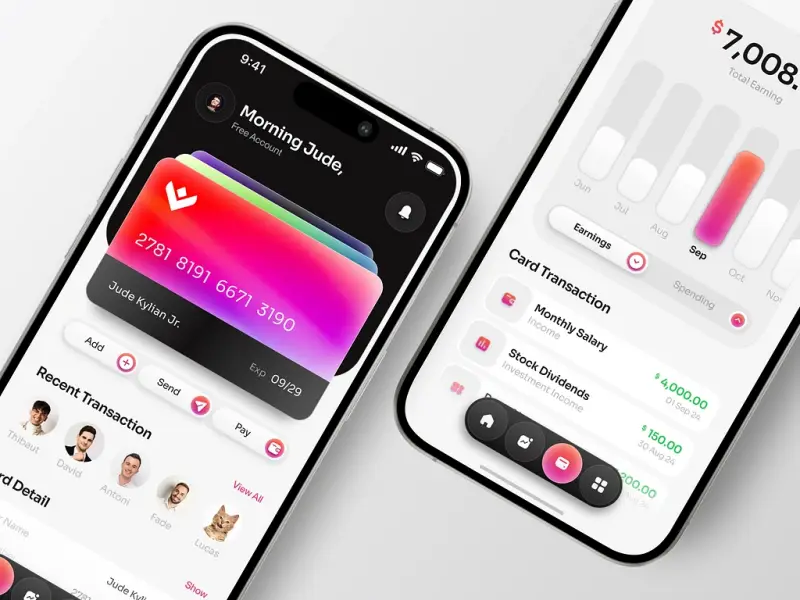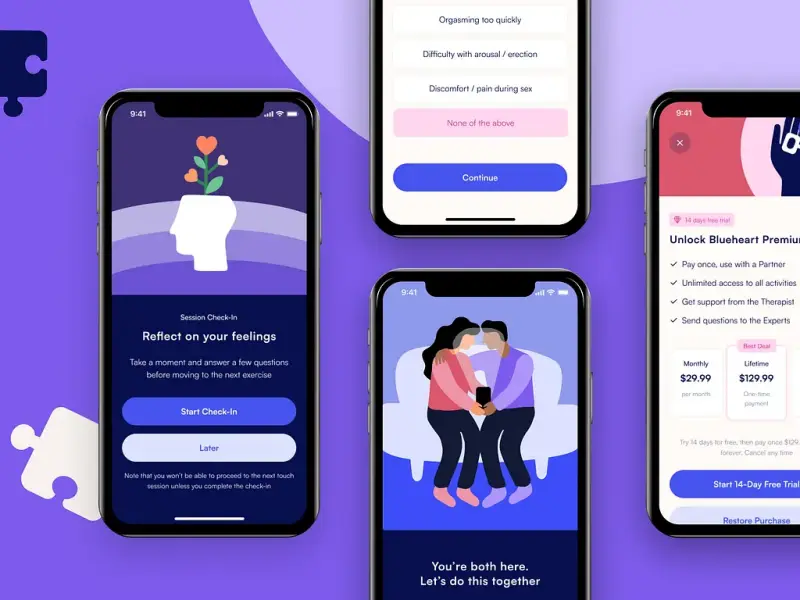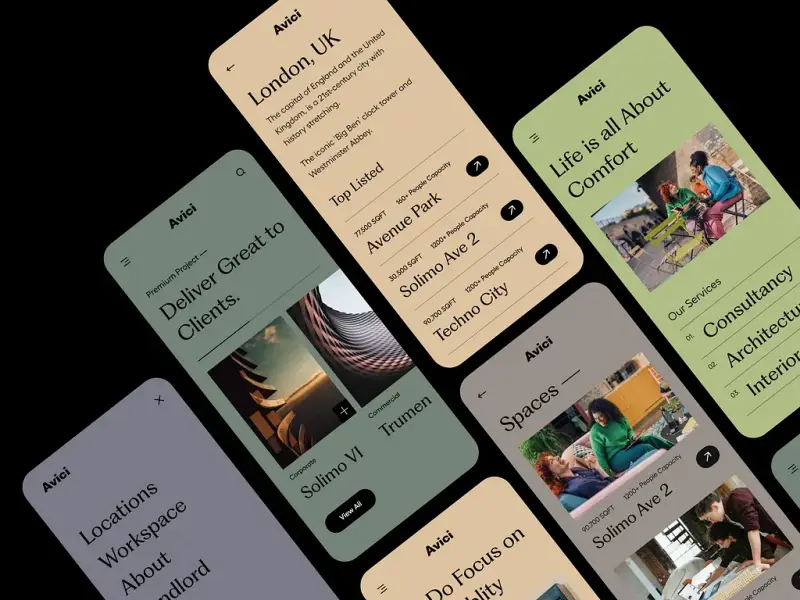10 Biggest Mobile App Development Challenges
- TECHVIFY Team
- February 4, 2025
- Knowledge, Best practices
- 0 Comments
Mobile apps have become the ultimate symbol of convenience. With just a few taps, you can effortlessly tackle both simple and complex tasks. It’s no wonder there’s been a surge of excitement around mobile applications in recent years.
According to Statista, the Google Play Store boasts over 3.3 million Android apps, while the Apple App Store offers more than 2.11 million iOS apps—and these numbers are only growing every day.
To create cutting-edge mobile apps that align with the latest trends, partnering with an experienced mobile app development company is essential. But before you dive in, it’s equally important to understand the step-by-step process of mobile app development. Even with this knowledge, you’ll still need to navigate several hurdles to bring a successful app to life.
In this guide, we’ll walk you through the key mobile app development challenges that arise during the development process—and how to overcome them.
Top Mobile App Development Challenges
Let’s be honest: building an app that stands out in a competitive industry isn’t easy as developers often face numerous challenges in mobile app development, from technical obstacles to user expectations.
However, the journey isn’t without its obstacles. Below, we’ll explore the most common mobile app development challenges developers face when creating an app from scratch—along with practical solutions to tackle them.
Challenges in mobile app development
1. Device Compatibility and Display Dimensions
First impressions matter, and for appreneurs, that impression often comes from how well their app performs across different devices. Compatibility is a critical factor that developers must prioritize.
If an app isn’t optimized for popular devices or screen sizes, it can lead to a poor user experience. This is why testing apps across various devices and screen dimensions remains one of the biggest challenges in mobile app development.
Keep in mind that Android and iOS have unique development processes, UI/UX standards, and frameworks. That’s why it’s crucial to research your target audience thoroughly before starting development.
Additionally, ensure your app runs smoothly on smartphones, tablets, and other devices with varying screen resolutions, sizes, and pixel densities.
2. Choosing the Right Operating System
While there are multiple platforms available, Android and iOS dominate the mobile app development landscape. Each platform operates differently, with distinct development procedures and target audiences.
Whether you’re developing for Android or iOS, you’ll encounter unique challenges. To avoid unnecessary roadblocks, familiarize yourself with best practices for app design and decide on a platform early in the process.
Many developers delay this decision, only to waste time redesigning and recoding later. The best approach? Choose your operating system at the outset and structure your app’s design and development accordingly.
3. Choosing the Best Development Approach
One of the biggest challenges developers face is deciding on a mobile app development approach early in the process. Whether you opt for native development or hybrid app development, it’s crucial to make this decision before diving into the actual build.
Why? Because each approach requires a different tech stack and skill set. To help you make an informed choice, let’s break down the two main options: native and cross-platform app development.
Native App Development
Native apps are designed specifically for a single platform, such as Android or iOS. They’re built using platform-specific tools and programming languages, which means they tend to deliver superior performance, security, and reliability compared to cross-platform apps. If you’re aiming for a high-performance app with a seamless user experience, native development is often the way to go.
Cross-Platform App Development
As the name suggests, cross-platform apps are designed to work across multiple platforms, including Android, iOS, and even Windows. This approach can save time and resources, but it’s essential to choose the right tech stack to ensure your app meets high-quality standards.
4. Integration With Other Systems
For enterprise or mid-size businesses, integrating your app with existing systems is a must. This not only enhances app performance but also streamlines business operations by enabling seamless data sharing and connecting on-premise and cloud-based applications.
To avoid headaches down the line, it’s important to plan for these integrations early in the development process. This foresight can save you significant time and money, allowing you to focus on the core functionality of your app.
Challenges in developing mobile application
5. Choosing the Right Development Technology
Selecting the right tech stack is no small feat. As an app owner, you don’t want to waste time and resources on inadequate technology. Developers need a deep understanding of available technologies to build an app that meets your goals while addressing major mobile app development challenges, such as device compatibility and user experience.
Whether you’re building a native, hybrid, or cross-platform app, clarity on your objectives is key. The right technology will ensure your app is adaptable, versatile, and accessible to a wide range of users, helping you overcome the challenges in mobile app development that stem from technological constraints.
For example, one of our clients wanted to leverage the latest mobile app technologies to create a water delivery management app with advanced features. After understanding their requirements, we developed a fully functional, user-friendly solution that streamlined their operations. Check out the table below for more details.
Have a Project Idea in Mind?
Get in touch with experts for a free consultation. We’ll help you decide on next steps, explain how the development process is organized, and provide you with a free project estimate.
6. Finance Management and Funding
After you’ve decided to develop a mobile application, the next crucial step is to think about the costs and how you’ll finance the project. Having a fantastic idea for an app is just the starting point; without the necessary funding, overcoming challenges in developing mobile application features and functionality will be nearly impossible.
The costs of mobile app development can vary widely depending on the complexity of the app. For instance, development costs can range from $3,000 to $150,000 or more. It’s essential to take these expenses into account before diving into the development process.
This is often one of the biggest challenges in software development, as estimating costs accurately and securing funding can be tricky. However, there are several ways to secure the funds you need. These include:
- Angel Investors who provide financial backing in exchange for equity.
- Loans from financial institutions specifically for business ventures.
- Joint Ventures where you collaborate with a partner to pool resources.
7. Standing Out in the Mobile Apps Market
Mobile apps are incredibly popular, which means the mobile market is highly competitive. One of the most significant challenges is ensuring app visibility in such a crowded space. So, how do you create an app that stands out?
One of the biggest challenges in mobile app development is promoting the app effectively. Without proper promotion, even the most well-designed app with excellent user experience may fail to reach its target audience.
Making your app discoverable is key. If users can easily find your app on app marketplaces, they are far more likely to download it. On the other hand, if your app is difficult to locate, it won’t meet your business goals, no matter how good it is.
8. High Cybersecurity Standards
Mobile apps often involve complex structures, as they contain essential services that allow a company to function. As your app evolves and collects more private data, protecting these assets should become a top priority.
Companies worldwide face significant challenges with insufficient security measures, which can lead to devastating data breaches, enormous financial losses, and even bankruptcy. Cyberattacks are becoming increasingly common, making cybersecurity one of the biggest challenges in developing mobile application solutions that are both secure and user-friendly.
To protect your app and its users, consider these key factors during development:
- Implement different access levels to control who can view or edit confidential information.
- Set up backup systems to ensure that data is never permanently lost.
- Integrate advanced anti-malware software to safeguard your app from cyber threats.
- Ensure that all data is encrypted, both during transmission and while at rest.
Challenges in developing mobile application
9. Getting New or Existing Customers to Adapt
For long-established companies launching a new app or tech startups targeting a hard-to-reach audience, convincing users to switch to your platform can be a significant hurdle. Whether it’s overcoming user habits or breaking into a competitive market, adoption doesn’t happen overnight.
To tackle this challenge, focus on creating engaging, informative content that highlights the unique benefits of your app. Distribute this content through your existing communication channels, such as email newsletters, social media, or customer outreach programs.
For returning customers, emphasize how your app simplifies their experience or adds value to their daily routines. For new users, craft targeted campaigns that address their pain points and showcase how your app provides a better solution than alternatives.
By leveraging your existing funnels and tailoring your messaging, you can effectively guide users toward embracing your platform—and make the transition feel effortless.
10. Finding the Right Mobile Developers
Finding skilled app developers with the expertise needed to overcome challenges in developing mobile application solutions can be a daunting task. For companies requiring customized solutions, hiring experienced developers is crucial to navigating the challenges of app creation and ensuring the final product meets expectations.
The challenge lies in sourcing the right talent, especially when your app involves niche processes or requires specific industry knowledge.
The best approach is to partner with an external mobile development team that has experience in your industry. With the right partner, you can avoid delays, reduce errors, and ensure a smooth development process.
Make sure the developers you choose:
- Have a proven track record in delivering high-quality apps.
- Understand the unique requirements of your industry.
- Possess the skills necessary to create innovative, functional, and on-trend apps.
Choose TECHVIFY for Mobile App Development
When it comes to mobile app development, TECHVIFY is the ideal partner to help you overcome challenges and deliver exceptional results. With a team comprised of the top 1% of Vietnam’s IT talent, TECHVIFY brings industry-specific expertise to craft tailored solutions for diverse sectors like Energy, BFSI, E-commerce, and more.
Trusted by global enterprises like SP Group, KPMG, and TAL Apparel, TECHVIFY has a proven track record of reliability and excellence. Their commitment to innovation is unmatched, with 30% of gross profits reinvested into R&D, ensuring your app leverages the latest AI-powered technologies and remains future-ready.
TECHVIFY’s solutions are scalable, adaptable, and built with security in mind, adhering to strict standards like GDPR, HIPAA, and ISO to protect your data. By choosing TECHVIFY, you gain a partner that will help you navigate every challenge—from managing costs and ensuring security to creating an app that truly stands out in a competitive market.
Conclusion
Creating a successful mobile app can be challenging, but with the right partner, every obstacle can be turned into an opportunity for growth. From managing costs and ensuring security to building an app that stands out in a crowded market, TECHVIFY is here to help you every step of the way. Backed by industry expertise, cutting-edge innovation, and a proven track record, TECHVIFY is your ultimate solution for mobile app development.
Contact TECHVIFY today for a free consultation and let our experts turn your app idea into reality. Whether you’re starting from scratch or optimizing an existing app, we’ll help you overcome challenges and create a product that exceeds expectations.
TECHVIFY – Global AI & Software Solutions Company
From Startups to Industry Leaders: TECHVIFY prioritizes results, not just deliverables. Accelerate your time to market and see ROI early with high-performing teams, AI (including GenAI) Software Solutions, and ODC (Offshore Development Center) services.
- Email: [email protected]
- Phone: (+84)24.77762.666








